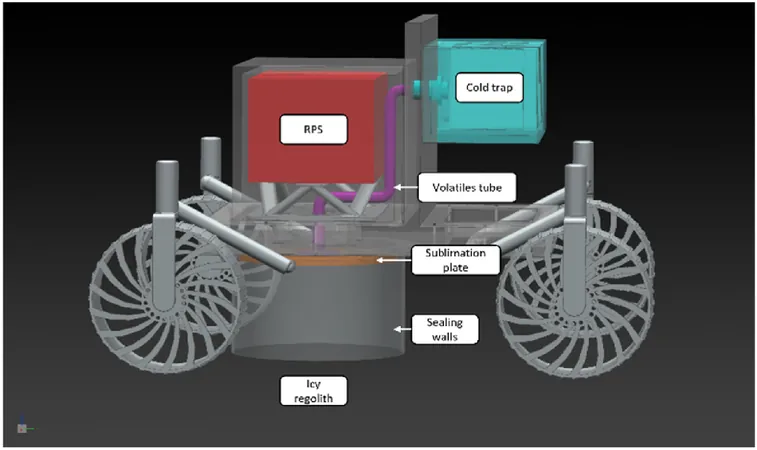
Revolutionary Rover Design Poised to Unlock Moon’s Hidden Water Reserves for Decades!
2024-09-26
The Discovery of Water Ice on the Moon
Scientists have confirmed the presence of water ice on the Moon since 1998, mainly concentrated in the dark, permanently shadowed craters near the lunar poles. These regions hold enormous potential for future space missions, yet pose a significant challenge: how to access this valuable resource when sunlight is virtually absent.
Innovative Solution for Ice Mining
A groundbreaking team of engineers has proposed an innovative solution: a lunar ice-mining rover powered by americium-241, a radioactive element that boasts a half-life of an astounding 432 years.
The Importance of Moon Water Resources
Why is this discovery so crucial? As humankind ventures further into the Solar System, harnessing water resources on the Moon will be vital for sustainable space exploration. This ancient icy treasure, believed to be deposited by comets or formed through solar wind interactions, could potentially yield up to 600 billion kilograms of water.
Impact on Space Exploration Costs
Harvesting it on-site would drastically reduce the costs associated with transporting resources from Earth, making lunar colonization and longer missions to places like Mars much more feasible.
Technological Hurdles in the Moon's Environment
However, the Moon's frigid conditions, reaching temperatures around 40K (-233°C), present unique technological hurdles. Traditional solar panels cannot operate effectively in these shadowed craters, necessitating a constant and reliable power source.
Radioisotope Power Systems (RPS)
Enter Radioisotope Power Systems (RPS), which have proven successful in powering missions to the outer Solar System, such as Voyager and New Horizons, by converting the heat from radioactive decay into electricity.
The Lunar Ice-Mining Rover Concept
Researchers led by Marzio Mazzotti from the University of Leicester have pioneered a concept for an ice-mining rover that employs americium-241 for its power needs. This approach promises to deliver a continuous power supply in the desolate lunar environment for decades, ensuring that the rover can perform efficiently in the dark.
Innovative Design and Technology
What sets this rover apart is its ingenious design that not only generates electricity but also utilizes the excess heat produced by americium-241 to thermally extract ice from lunar regolith. The rover features a sublimation plate that converts ice into gas, which can then be collected in a cold trap.
Testing and Future Implications
Testing and simulations of the rover's advanced Thermal Management System have shown promising results, indicating the feasibility of mining water ice from the Moon's polar regions through thermal techniques.
Conclusion: The Future of Lunar Exploration
As we stand on the brink of a new era in space exploration, this robotic marvel may soon open the floodgates to lunar hydration, fueling exciting missions beyond our celestial neighbor. Could this be the key to sustainable human presence on the Moon and beyond? Stay tuned, as the next chapter in lunar exploration unfolds!









 Brasil (PT)
Brasil (PT)
 Canada (EN)
Canada (EN)
 Chile (ES)
Chile (ES)
 España (ES)
España (ES)
 France (FR)
France (FR)
 Hong Kong (EN)
Hong Kong (EN)
 Italia (IT)
Italia (IT)
 日本 (JA)
日本 (JA)
 Magyarország (HU)
Magyarország (HU)
 Norge (NO)
Norge (NO)
 Polska (PL)
Polska (PL)
 Schweiz (DE)
Schweiz (DE)
 Singapore (EN)
Singapore (EN)
 Sverige (SV)
Sverige (SV)
 Suomi (FI)
Suomi (FI)
 Türkiye (TR)
Türkiye (TR)